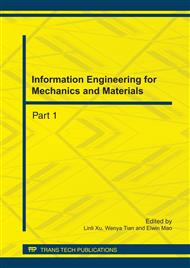p.279
p.284
p.288
p.294
p.298
p.302
p.307
p.313
p.317
Phosphorus Removed by High Calcium Fly Ash Ceramsite in Artificial Biological Filter Bed
Abstract:
Fly ash Ceramsite, Artificial Biofilter Bed, Dry Umbrella Bamboo, Phosphorus Removal Abstract: High calcium fly ash ceramsite had tremendous surface area and porosity, the unit weight of fly ash adsorption column adsorption capacity of ceramsite was 0.032mg•g-1, which was higher than normal calcium fly ash ceramsite adsorption capacity. The fix adsorption column tests showed that the adsorption capacity got stable when the contact time was 3 hours and the saturation adsorption was got at the ninth hour. The result of subsequent tests showed that the phosphorus resolve would not occur if the adsorption condition doesn’t change. The pilot test with actual wastewater was done and the results showed that the PO43- concentrations of effluent were less than 0.2mg•L-1 and the removal rate reached 90%, dry umbrella bamboo was the most suitable aquatic plant. The artificial biological filter process monitoring showed that the phosphorus of the sewage was mainly removed in the front of artificial biological filter bed.
Info:
Periodical:
Pages:
298-301
Citation:
Online since:
July 2011
Authors:
Price:
Сopyright:
© 2011 Trans Tech Publications Ltd. All Rights Reserved
Share:
Citation:


